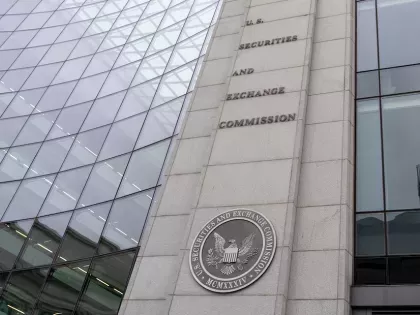Read about the latest cybersecurity news and get advice on third-party vendor risk management, reporting cybersecurity to the Board, managing cyber risks, benchmarking security performance, and more.
Insights blog.

Critical Vulnerabilities Discovered in Automated Tank Gauge Systems
Bitsight TRACE explores several critical vulnerabilities discovered in ATG systems and their inherent risk when exposed to the Internet.

Key risk indicators (KRIs) can help monitor and control cyber risk. But what KRIs should you focus on?

Security ratings, or cyber security ratings, are a data-driven, objective and dynamic measurement of an organization’s security performance. Thousands of organizations around the world use Bitsight Security Ratings as a tool to address a variety of critical, interconnected internal and external use cases at scale in order to enable more effective decision making throughout the global business ecosystem.

Key Risk Indicators (KRIs) können dabei helfen, Cyberrisiken zu überwachen und zu kontrollieren. Aber auf welche KRIs sollten Sie sich konzentrieren?

Les indicateurs clés de risque (KRI) peuvent aider à surveiller et à contrôler les cyber-risques. Mais sur quels KRI devez-vous vous concentrer ?

What exactly is a “material” cybersecurity incident as defined in the latest SEC cybersecurity disclosure requirements? Let's find out.

While many IT, security, and risk professionals have developed good metrics and visuals for communicating internally about cyber risk, such as the safety cross and pareto charts, reporting on cybersecurity to non-technical individuals remains challenging.

The red lights are flashing everywhere. News stories are warning about a sharp rise in ransomware attacks, a 2000X fold increase in cybersecurity breaches, and more cyber-related doomsday scenarios. Meanwhile, the Biden Administration released a much-anticipated cybersecurity plan earlier this year, calling for more investments in cybersecurity.

With cyberattacks on the rise, security investments are more important than ever. Still, the pandemic has forced many organizations to reconsider how they allocate their IT dollars. Between the new work-from-home paradigm and the increasingly global nature of many modern workplaces, CIOs have had to accelerate investments in cloud solutions and remote technology.

Based on security performance data of hundreds of thousands of global organizations, Peer Analytics gives security and risk leaders visibility into the relative performance of their cybersecurity programs against a meaningful set of peers. These analytics help them set achievable performance targets based on their Bitsight Security Rating, effectively allocate limited resources, and efficiently prioritize security efforts with a focus on continuous program improvement.
Peer Analytics provides companies with a more granular view of their security rating. It is based on hundreds or thousands of companies (a broader set of similar organizations) that allow you to see where there are gaps in your security performance: at the ratings level, risk vector grade level, and at the vector detail event level.
Peer Analytics: Analyze, Prioritize, Act
Today, security and risk leaders use Peer Analytics to:
Set achievable security goals based on relative performance withi
Peer Analytics provides companies with a more granular view of their security rating. It is based on hundreds or thousands of companies (a broader set of similar organizations) that allow you to see where there are gaps in your security performance: at the ratings level, risk vector grade level, and at the vector detail event level.
Peer Analytics: Analyze, Prioritize, Act
Today, security and risk leaders use Peer Analytics to:
Set achievable security goals based on relative performance withi

An increasing number of security and risk teams are using security ratings to effectively assess the impact of their security programs as well as communicate changes to key decision makers — like the Board of Directors. These teams know that their company needs tools that provide an objective and quantitative view of their cybersecurity performance over time.

In a 2017 survey of almost 1,300 CEOs conducted by PwC, 63% of respondents said they were “extremely concerned” about cyber threats — up from just 8% in 2013.

Most organizations are accustomed to benchmarking certain business areas like sales, profits, and resource allocation. These areas all have one thing in common — they are easily measured with simple, quantifiable metrics.

Effective cybersecurity involves regularly assessing the effectiveness of your organization’s policies, tools, and processes to ensure you’re staying ahead of the curve. In order to gain insight into your cybersecurity performance, you need clear, continuous, actionable metrics that you can track over time and compare to peers, competitors, and across business units.

In today’s evolving cyber risk landscape, Boards of Directors are becoming increasingly concerned about their company’s security performance. In fact, the NACD has found that 89% of public companies and 72% of private companies regularly discuss security at Board meetings. While they are asking for updates on enterprise cybersecurity posture more often, they do not necessarily have the expertise or experience to know what to ask for — or how to interpret the technical information presented to them.

Quantifying and tracking your cybersecurity performance so you can compare your organization to others, also known as benchmarking, is necessary to improving the effectiveness of your security programs.